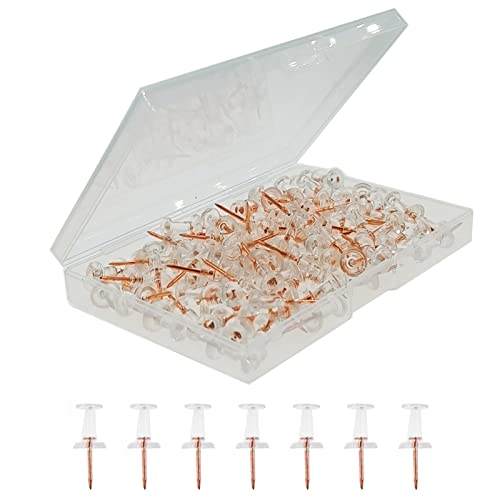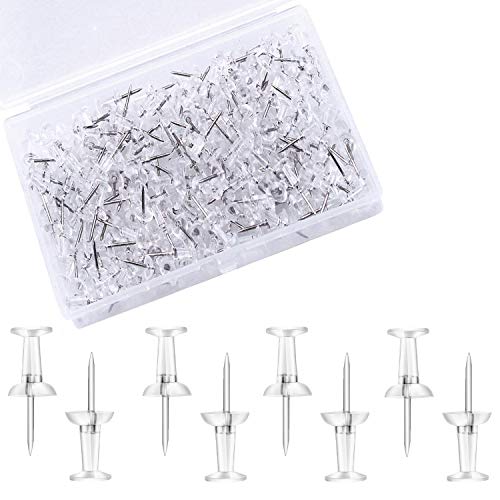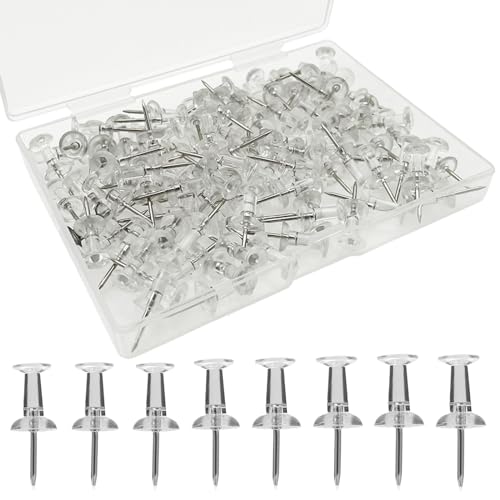Materials Used for Pushpins
Pushpins, also known as thumbtacks or map pins, are common accessories used to secure paper, photos, and other lightweight materials onto bulletin boards or corkboards. These small pins have a pointed end that can be easily inserted into a surface, and a flat head or cap that provides a stable grip. Pushpins are available in a variety of materials, each with their own pros and cons. Here are some common materials used for pushpins:
Plastic Pushpins
Plastic pushpins are one of the most popular and widely used types of pushpins. They are made from durable and lightweight plastic materials, such as polystyrene or polypropylene. Plastic pushpins are affordable, easy to use, and come in a variety of colors and shapes. They are often preferred for use on delicate or thin surfaces, such as corkboards or foam boards, as they are less likely to cause any damage. However, plastic pushpins may not be as strong or long-lasting as other materials, and their plastic heads can sometimes break or wear down over time.
Metal Pushpins
Metal pushpins are another common choice for securing materials onto surfaces. They are typically made from brass or steel and offer greater strength and durability than plastic pushpins. Metal pushpins can be used on a variety of surfaces, including corkboards, bulletin boards, and even wooden surfaces. They are less likely to bend or break, making them suitable for heavier materials. However, metal pushpins may leave small holes or marks on the surface, especially if they are forcefully inserted or removed. Some metal pushpins also come with decorative heads or caps, adding a touch of style to your bulletin board.
Thumbtacks with Nylon Heads
Thumbtacks with nylon or plastic heads are often used when you need extra grip or to prevent damage to delicate materials. The nylon head provides a firm and secure hold, while the sharp metal pin easily goes through the surface. These thumbtacks are commonly used in schools, offices, and art studios where frequent pinning and repositioning of materials is required. They come in various colors and sizes, making them suitable for all types of projects. However, nylon head thumbtacks may not be as strong as metal pushpins and may wear down over time with heavy use.
Cork Pushpins
Cork pushpins are specifically designed for use on corkboards. These pushpins have a tapered or extra sharp point that easily penetrates the corkboard without damaging it. The pushpins usually have a wooden or plastic head that provides a secure grip. Cork pushpins are ideal for pinning multiple layers of paper or heavier objects onto a corkboard, as they offer excellent stability. They come in various sizes and designs, including round, cylinder, or decorative shapes. However, cork pushpins may not work effectively on other surfaces and are best suited for corkboard use.
Decorative Pushpins
Decorative pushpins are more about style and design than the material used. They are often made from plastic, metal, or wood and come in various shapes, colors, and patterns. Decorative pushpins are great for adding a personal touch or creating a theme on your bulletin board. They can be used for displaying photos, notes, or artwork while adding a decorative element to the overall presentation. However, decorative pushpins may not have the same level of strength or durability as regular pushpins, so they are best suited for lighter materials.
In conclusion, pushpins are available in a variety of materials to suit different needs and preferences. Plastic pushpins are affordable and suitable for delicate surfaces, while metal pushpins offer greater strength and durability. Thumbtacks with nylon heads provide extra grip and are often used in school or office settings. Cork pushpins are specifically designed for corkboards and offer excellent stability. Finally, decorative pushpins add a touch of style but may not be as strong as regular pushpins. Consider the material and purpose of the pushpins when choosing the right ones for your project.






